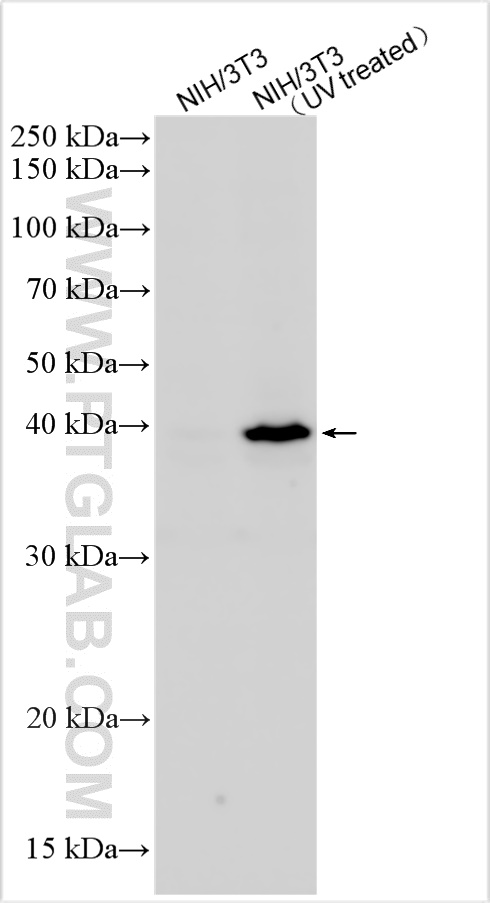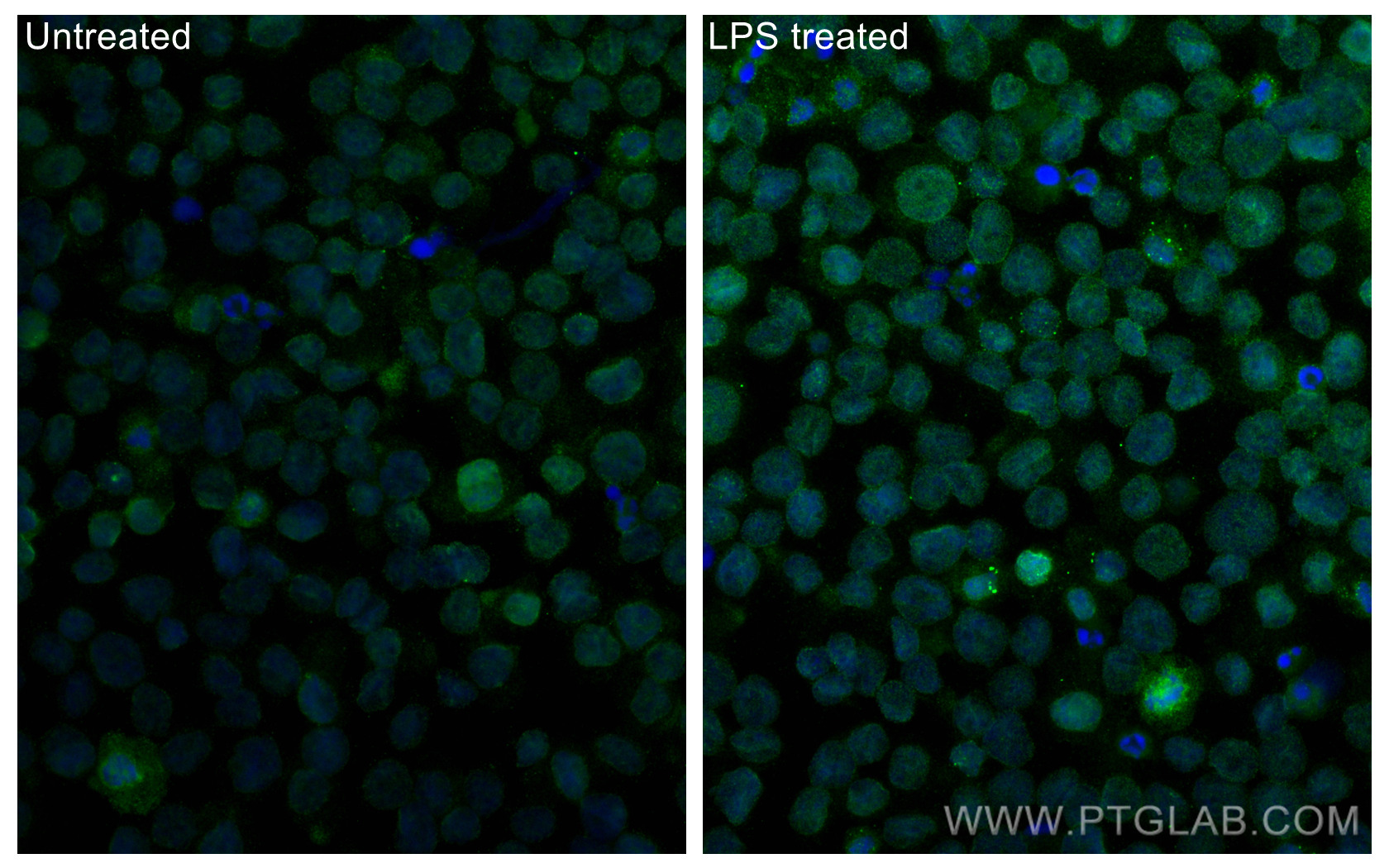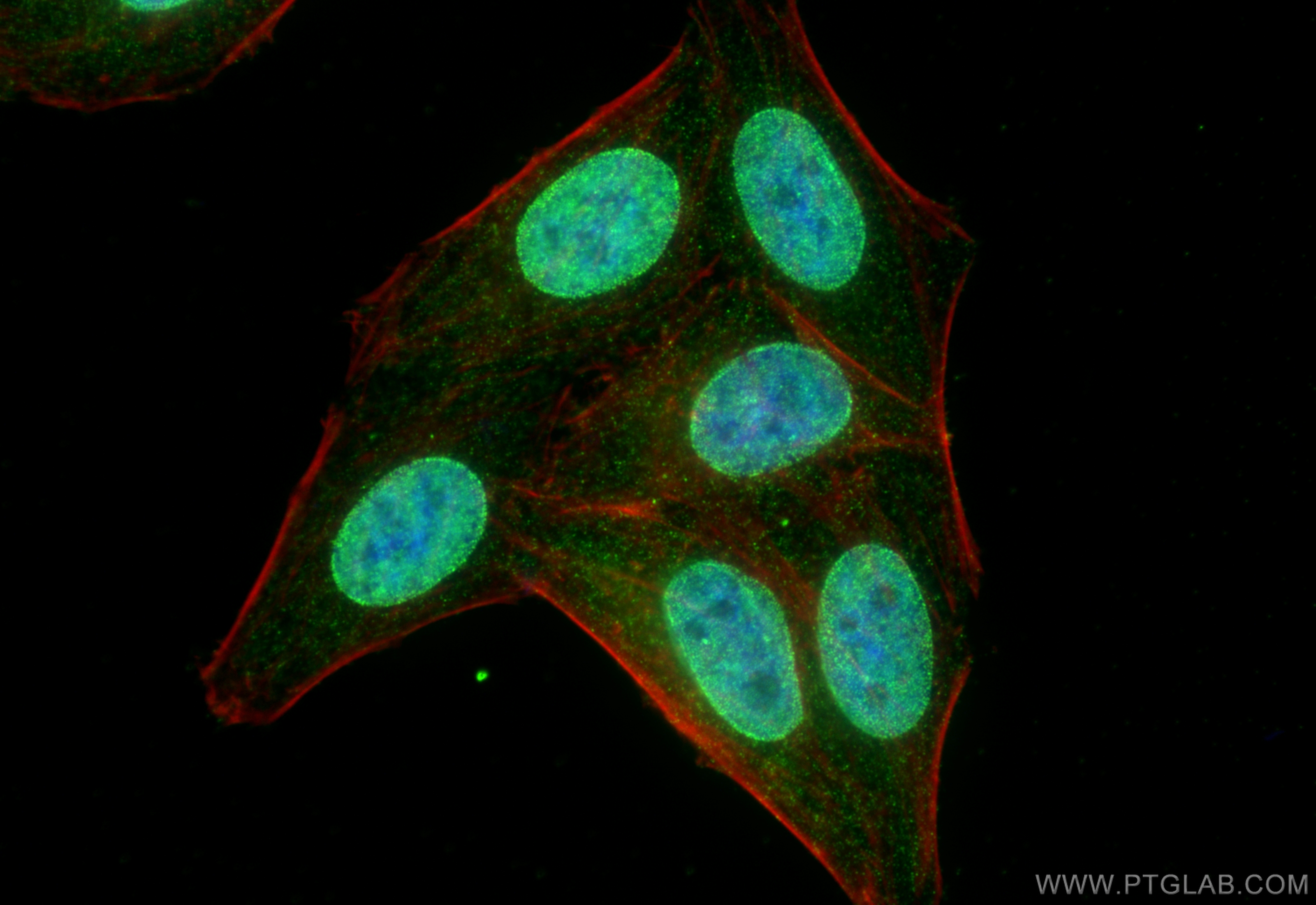验证数据展示
经过测试的应用
| Positive WB detected in | UV treated HEK-293T cells, LPS treated THP-1 cells, UV treated NIH/3T3 cells |
| Positive IF/ICC detected in | LPS treated THP-1 cells, HepG2 cells |
推荐稀释比
| 应用 | 推荐稀释比 |
|---|---|
| Western Blot (WB) | WB : 1:1000-1:4000 |
| Immunofluorescence (IF)/ICC | IF/ICC : 1:50-1:500 |
| It is recommended that this reagent should be titrated in each testing system to obtain optimal results. | |
| Sample-dependent, Check data in validation data gallery. | |
产品信息
28796-1-AP targets Phospho-p38 MAPK (Thr180/Tyr182) in WB, IHC, IF/ICC, ELISA applications and shows reactivity with human, mouse samples.
| 经测试应用 | WB, IF/ICC, ELISA Application Description |
| 文献引用应用 | WB, IHC, IF |
| 经测试反应性 | human, mouse |
| 文献引用反应性 | human, mouse, rat, pig |
| 免疫原 | Peptide 种属同源性预测 |
| 宿主/亚型 | Rabbit / IgG |
| 抗体类别 | Polyclonal |
| 产品类型 | Antibody |
| 全称 | mitogen-activated protein kinase 14 |
| 别名 | p p38 MAPK, p p38 MAPK (Thr180/Tyr182), p38 alpha/MAPK14 (Thr180/Tyr182), p38 MAPK (Thr180/Tyr182), Phospho p38 MAPK |
| 计算分子量 | 360 aa, 41 kDa |
| 观测分子量 | 38-42 kDa |
| GenBank蛋白编号 | BC031574 |
| 基因名称 | p38 MAPK |
| Gene ID (NCBI) | 1432 |
| RRID | AB_2918205 |
| 偶联类型 | Unconjugated |
| 形式 | Liquid |
| 纯化方式 | Antigen affinity purification |
| UNIPROT ID | Q16539 |
| 储存缓冲液 | PBS with 0.02% sodium azide and 50% glycerol, pH 7.3. |
| 储存条件 | Store at -20°C. Stable for one year after shipment. Aliquoting is unnecessary for -20oC storage. |
背景介绍
A stress-activated serine/threonine protein kinase, p38 mitogen-activated protein kinase (p38 MAPK), belongs to the MAP kinase superfamily. Diverse extracellular stimuli, including ultraviolet light, irradiation, heat shock, high osmotic stress, proinflammatory cytokines and certain mitogens, trigger a stress-regulated protein kinase cascade culminating in activation of p38 MAPK through phosphorylation on a TGY motif within the kinase activation loop. The p38 MAPK undergoes dual phosphorylation at Thr182 and Tyr180 in the Thr-Gly-Tyr activation loop by MAP kinase kinase 6 (MKK6). Upon activation, p38 MAPK phosphorylates multiple substrates, including MAPK activated protein kinase 2 (MAPKAPK2) and activating transcription factor 2 (ATF-2). (PMID: 26901653, PMID: 10807318)
实验方案
| Product Specific Protocols | |
|---|---|
| WB protocol for Phospho-p38 MAPK (Thr180/Tyr182) antibody 28796-1-AP | Download protocol |
| IF protocol for Phospho-p38 MAPK (Thr180/Tyr182) antibody 28796-1-AP | Download protocol |
| Standard Protocols | |
|---|---|
| Click here to view our Standard Protocols |
发表文章
| Species | Application | Title |
|---|---|---|
Brain Behav Immun Egln3 expression in microglia enhances the neuroinflammatory responses in Alzheimer's disease | ||
Redox Biol Deficiency of S100 calcium binding protein A9 attenuates vascular dysfunction in aged mice | ||
Clin Transl Med PINK1 modulates Prdx2 to reduce lipotoxicity-induced apoptosis and attenuate cardiac dysfunction in heart failure mice with a preserved ejection fraction | ||
Cell Death Dis USP4 promotes the proliferation, migration, and invasion of esophageal squamous cell carcinoma by targeting TAK1 | ||
Cell Commun Signal Spinster homolog 2/S1P signaling ameliorates macrophage inflammatory response to bacterial infections by balancing PGE2 production | ||
Clin Transl Med CircRNA DDX21 acts as a prognostic factor and sponge of miR-1264/QKI axis to weaken the progression of triple-negative breast cancer. |







